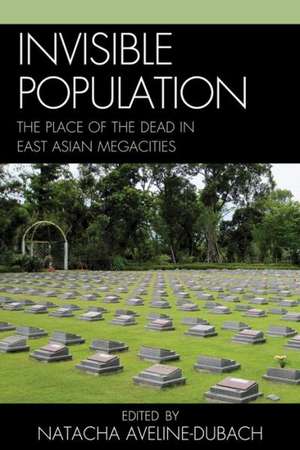Invisible Population
en Limba Engleză Paperback – 4 dec 2013
Preț: 447.57 lei
Nou
Puncte Express: 671
Preț estimativ în valută:
85.65€ • 89.09$ • 70.71£
85.65€ • 89.09$ • 70.71£
Carte tipărită la comandă
Livrare economică 14-28 aprilie
Preluare comenzi: 021 569.72.76
Specificații
ISBN-13: 9780739190906
ISBN-10: 0739190903
Pagini: 223
Ilustrații: black & white tables, maps, figures
Dimensiuni: 152 x 226 x 18 mm
Greutate: 0.34 kg
Editura: Rowman & Littlefield
ISBN-10: 0739190903
Pagini: 223
Ilustrații: black & white tables, maps, figures
Dimensiuni: 152 x 226 x 18 mm
Greutate: 0.34 kg
Editura: Rowman & Littlefield
Notă biografică
Descriere
This book provides new information on funerary practices in East Asia's largest cities in which spatial constraints and the secularization of lifestyles are driving innovation. It reveals common trends in Japan, China and Korea, and addresses emerging challenges such as urban sustainability and growing social inequities.
